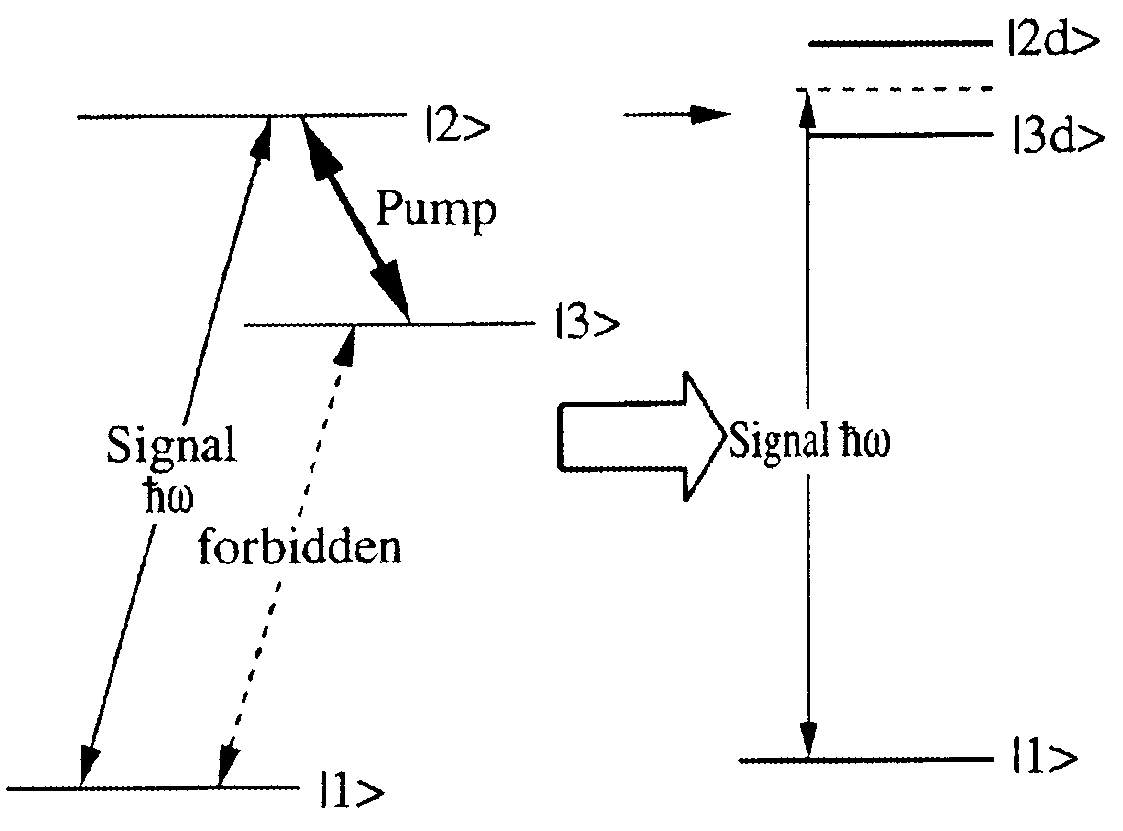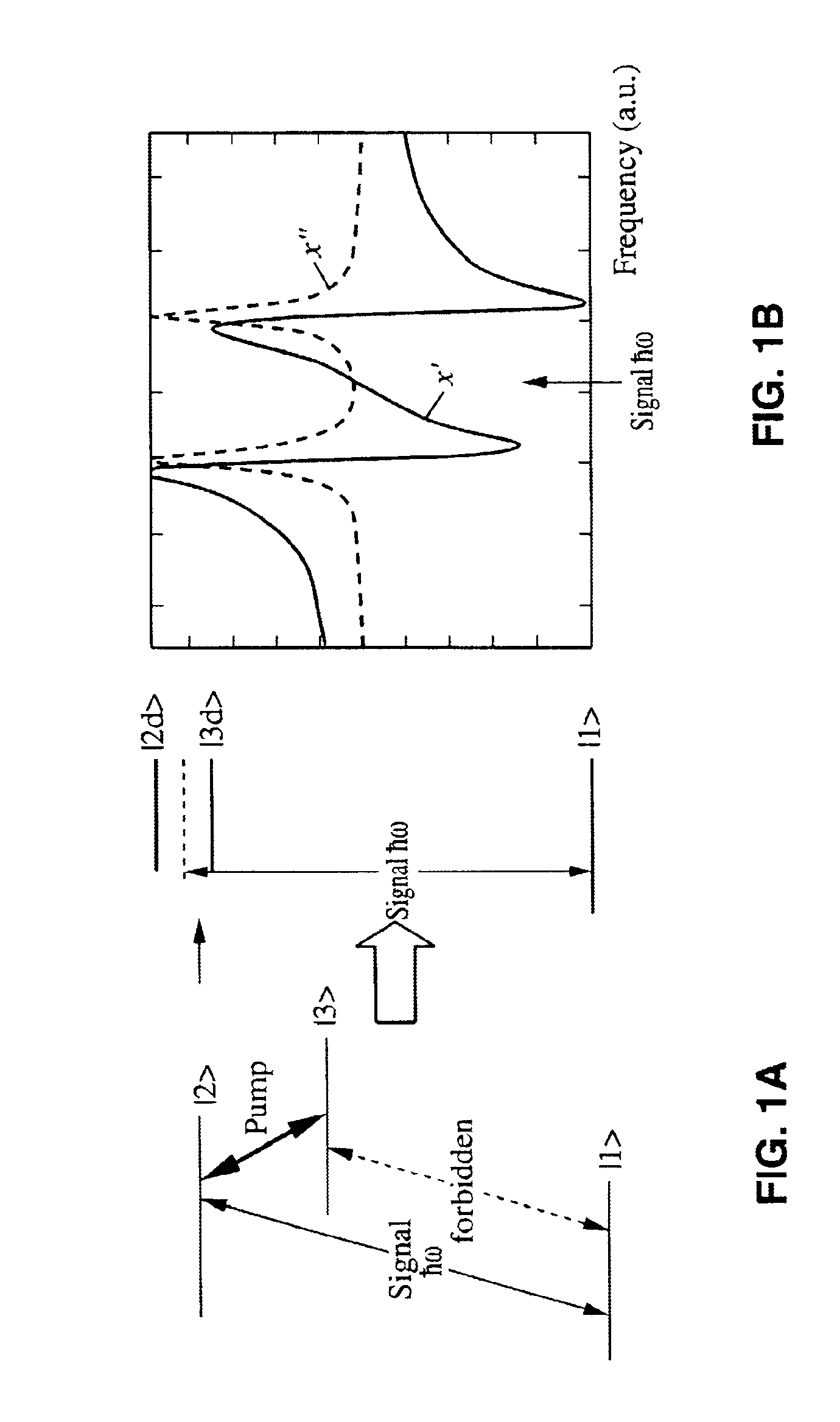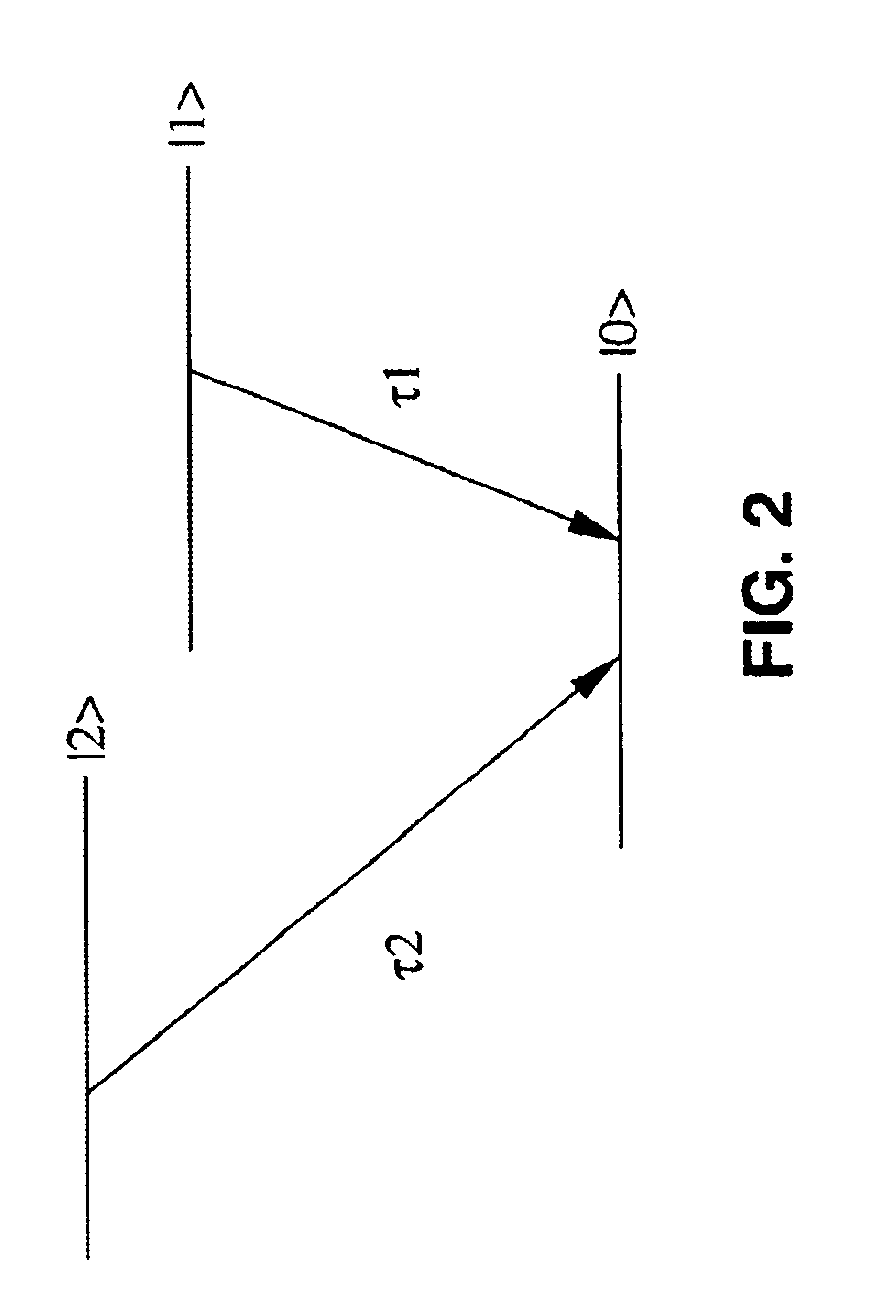Variable semiconductor all-optical buffer using slow light based on electromagnetically induced transparency
- Summary
- Abstract
- Description
- Claims
- Application Information
AI Technical Summary
Benefits of technology
Problems solved by technology
Method used
Image
Examples
example
[0158]In this example, disk-shaped QDs are used. |1> is chosen to be the hole level in the valence band; |2> and |3> are chosen to be the electronic levels in the conduction band. In our calculations, ωS=1.55 μm, δ=0, |μ32| / e=25 Å, |μ21| / e=15ξÅ where e and ξ are electron charge and excitonic enhancement factor due to the confinement of electrons and holes inside the QD, respectively. Ten vertically-stacked QD layers with 8 nm diameter, 10 nm height, and surface density of 4×1010 / cm2 are used. FIG. 13 shows the slow-down factor S and the loss α experienced by the signal light under different pump power intensity. The group velocity slow-down factor (left axis) and the corresponding absorption coefficient (right axis) are plotted as a function of the pump power density. Three different linewidth regimes are compared. Case A, B, C corresponds to 1 μeV, 50 μeV and 1 meV, respectively. Enhancement factor ξ=10 is used in this plot. ℏγ31=ℏγ21 takes the values of 1 μeV, 50 μeV and 1 meV in ...
PUM
| Property | Measurement | Unit |
|---|---|---|
| dephasing time | aaaaa | aaaaa |
| dephasing time | aaaaa | aaaaa |
| length | aaaaa | aaaaa |
Abstract
Description
Claims
Application Information
 Login to View More
Login to View More - R&D
- Intellectual Property
- Life Sciences
- Materials
- Tech Scout
- Unparalleled Data Quality
- Higher Quality Content
- 60% Fewer Hallucinations
Browse by: Latest US Patents, China's latest patents, Technical Efficacy Thesaurus, Application Domain, Technology Topic, Popular Technical Reports.
© 2025 PatSnap. All rights reserved.Legal|Privacy policy|Modern Slavery Act Transparency Statement|Sitemap|About US| Contact US: help@patsnap.com



